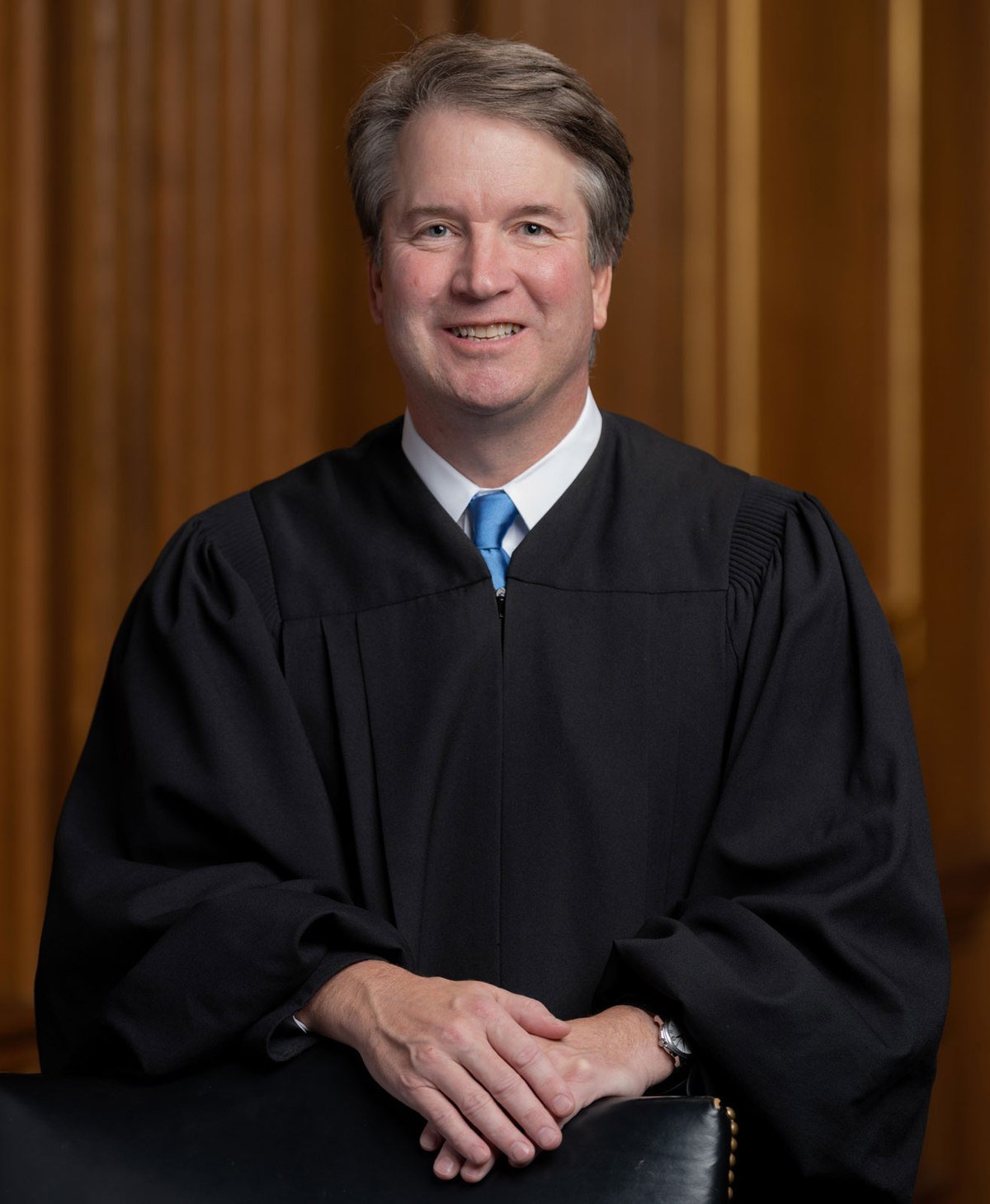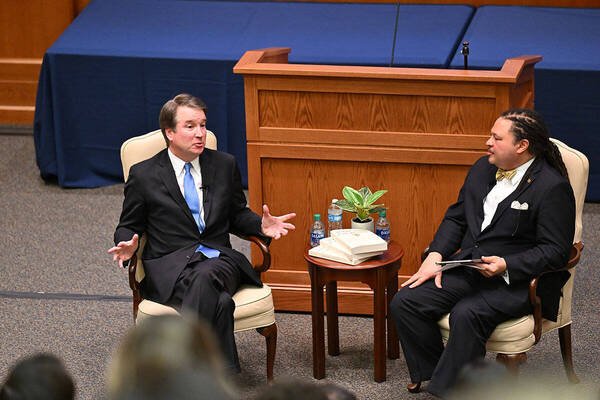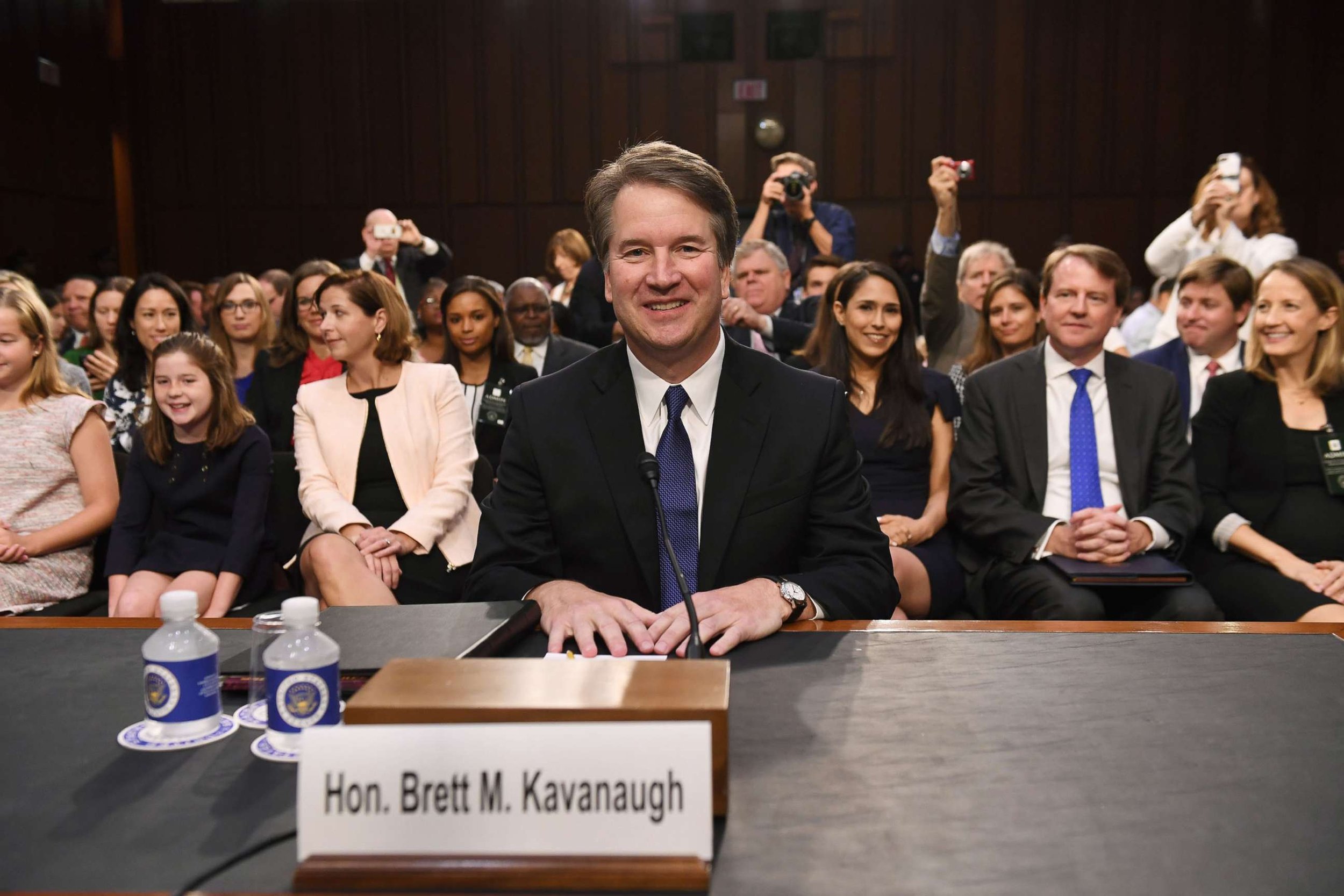BRETT KAVANAUGH
Associate Justice
Appointed by: Donald Trump
Sworn in: October 6, 2018
Preceded by: Anthony Kennedy
2018 — Present
Personal Life and Education
Brett Kavanaugh was born on February 12, 1965 in Washington, D.C. to an Irish Catholic family. Kavanaugh's father was a lawyer and served as the president of the Cosmetic, Toiletry and Fragrance Association for two decades while his mother was a high school history teacher in the 1960s and 1970s before she earned a Juris Doctor degree from American University in 1978. From 1995 to 2001, his mother served as a Maryland Circuit Court judge in Montgomery County, Maryland. Kavanaugh was raised in Bethesda, Maryland and attended Georgetown Preparatory School, an all-boys Jesuit college prep school. In school, Kavanaugh was the captain of the basketball team and a wide receiver and cornerback on the football team. Kavanaugh graduated from Georgetown Prep in 1983, just two years before of Justice Gorsuch.
After graduating from Georgetown Prep, Kavanaugh attended his grandfather’s alma matter, Yale. At Yale, Kavanaugh played for the junior varsity basketball team for two years and wrote articles about sports for the Yale Daily News. Kavanaugh joined the Delta Kappa Epsilon fraternity and was remembered as a “serious but not showy student.” In 1987, Kavanaugh graduated cum laude with a Bachelor of Arts in history before continuing his time at Yale in law school. In law school, Kavanaugh was a member of the Yale Law Journal and worked as a notes editor in his third year. In 1990, he graduated with a Juris Doctor degree.
Kavanaugh with President Bush, Andy Card, and Condoleezza Rice Credit: The White House
Career
Following his graduation from Yale, Kavanaugh served as a law clerk for Judge Stapleton of the U.S. Court of Appeals for the Third Circuit until 1991, when he began clerking for Judge Kozinski of the U.S. Court of Appeals for the Ninth Circuit. Before the Supreme Court’s 1992 term began, Kavanaugh interviewed for a clerkship with Chief Justice William Rehnquist, but it was not offered to him.
After working in private practice for the law firm Kirkland & Ellis in the summer of 1992, Solicitor General Ken Starr offered Kavanaugh a one-year fellowship. From 1993 to 1994, Kavanaugh clerked for Justice Kennedy alongside his future colleague on the bench, Justice Gorsuch. After clerking for Justice Kennedy, Kavanaugh again worked for Starr as an Associate Counsel in the Office of the Independent Counsel until 1997, after which he worked in private practice for a year. In 1998, Kavanaugh rejoined Starr as an Associate Counsel where he helped investigate and author the Starr Report, which argued the grounds for President Clinton’s impeachment following the Monica Lewinski scandal. Kavanaugh rejoined Kirkland & Ellis in 1999 and made partner.
In December 2000, Kavanaugh joined George W. Bush’s legal team fighting the ballot recount in Florida during the 2000 election. When President Bush took office, Kavanaugh was hired as an associate by the White House Counsel. In July 2003, Kavanaugh replaced Harriet Miers as Assistant to the President and White House staff secretary. That same month, President Bush nominated Kavanaugh to the U.S. Court of Appeals for the D.C. Circuit. The Senate Judiciary Committee didn’t report on his nomination until May 11, 2006, in which his nomination was favorably reported to the Senate on a 10—8 vote. On May 26, the Senate confirmed his nomination with a 57—36 vote.
Nomination to the Court
On June 27, 2018, Justice Anthony Kennedy sent a letter to President Trump announcing his intention to retire. Kavanaugh was one of four U.S. Court of Appeals judges to interview with President Trump to replace Justice Kennedy and on July 9, President Trump announced Kavanaugh as his nominee for the Supreme Court. The Senate Judiciary Committee scheduled Kavanaugh’s confirmation hearings to begin on September 4, but they were delayed by Democrats who complained about the absence of records from Kavanaugh’s time working in the Bush administration. The hearings on September 5 and lasted for three days.
On September 12, Senator Feinstein (D-CA) confirmed to the media that a complaint had been made against Kavanaugh claiming that he sexually assaulted a girl in high school. His accuser, Dr. Christine Blasey Ford, testified before the Senate Judiciary Committee on September 27. Kavanaugh denied the allegations and the White House issued a statement on his behalf, stating "I categorically and unequivocally deny this allegation. I did not do this back in high school or at any time.” Ford cited her lifelong friend, Leland Ingham Keyser, as a witness to the alleged sexual assault, but Keyser denied any knowledge of the event. On October 4, the White House announced that after reviewing the FBI’s probe into Ford’s claims, no evidence was found to corroborate the allegations against Kavanaugh. On October 6, the Senate voted to confirm Kavanaugh’s nomination by a vote of 50—48.







